

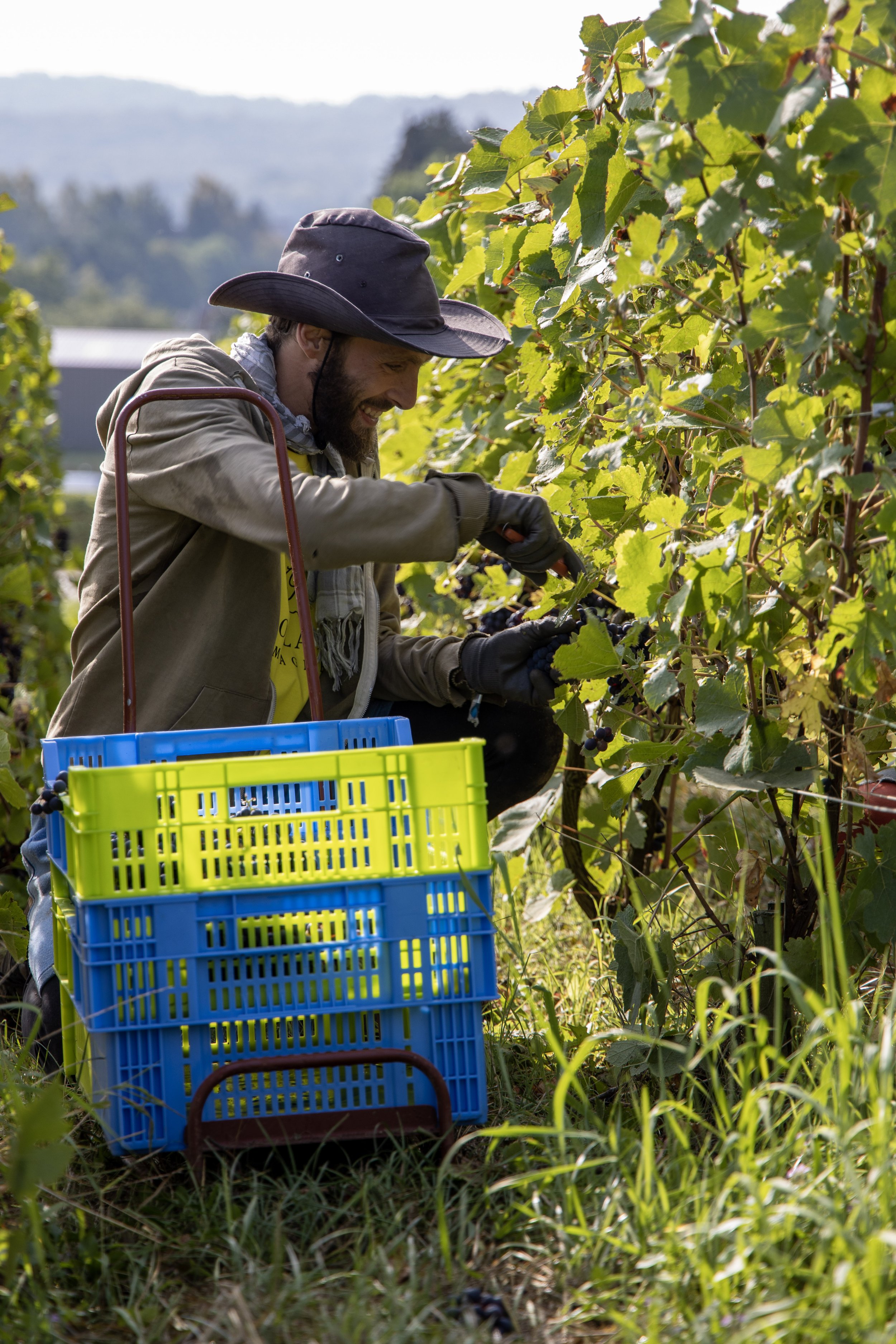
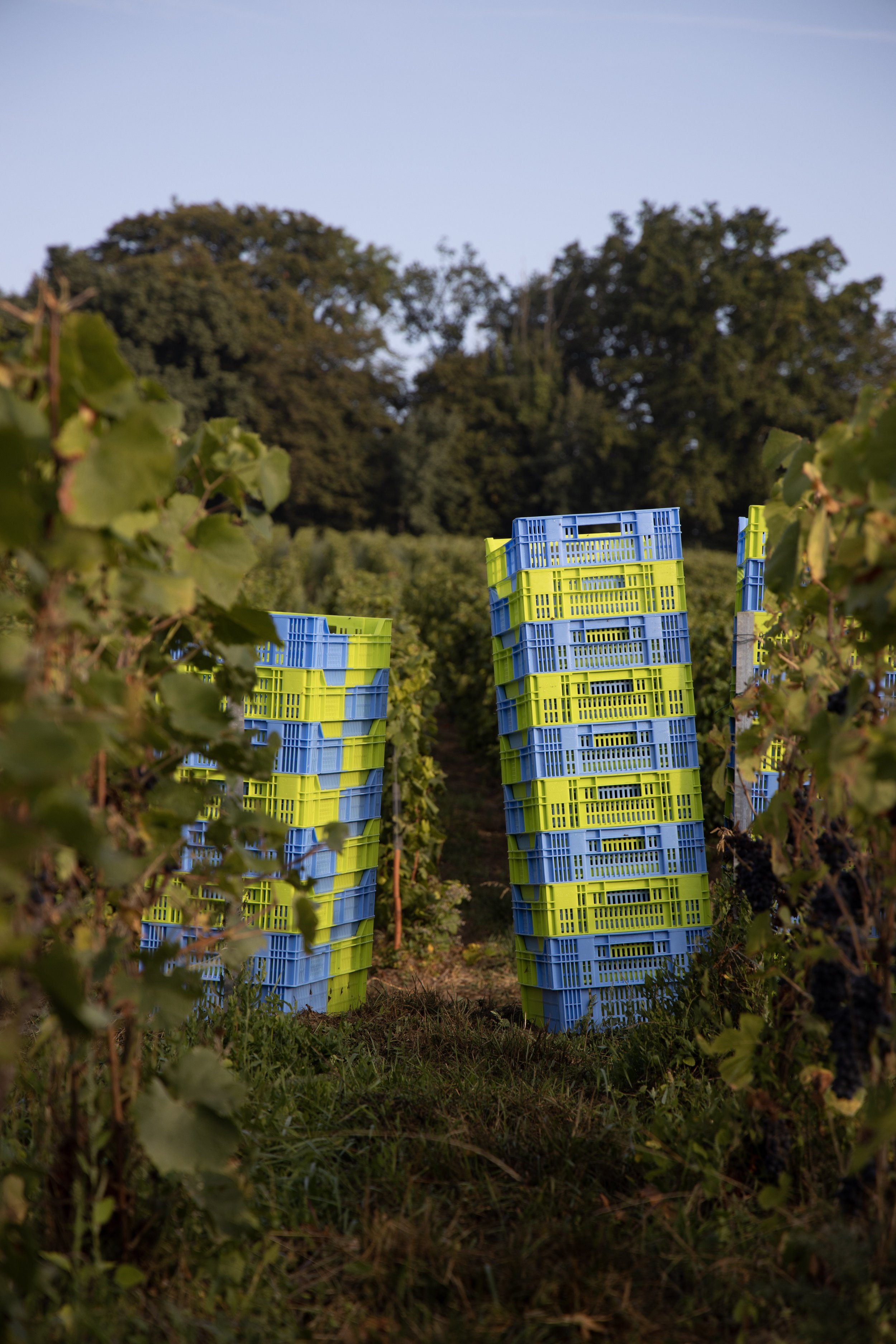
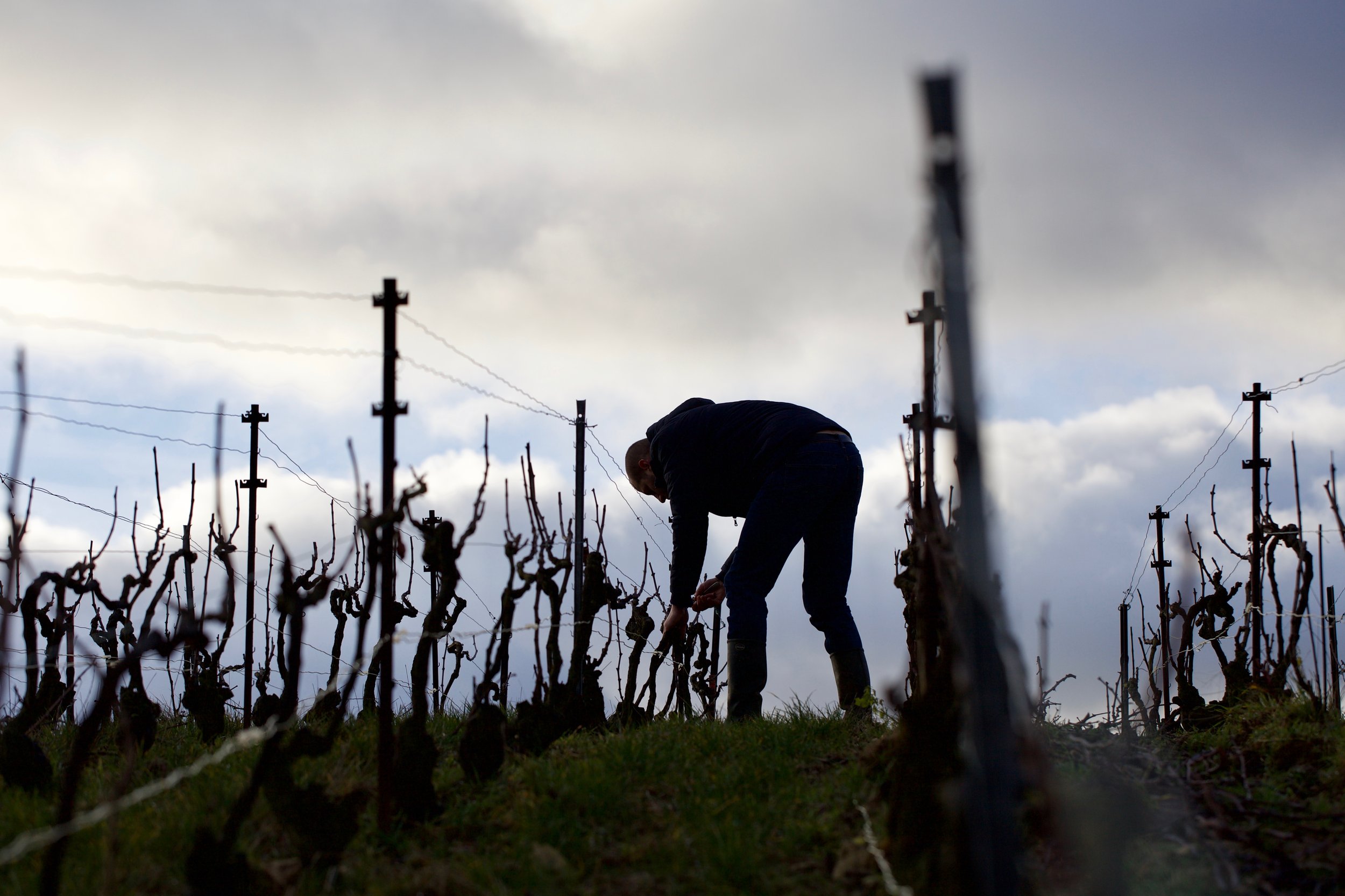


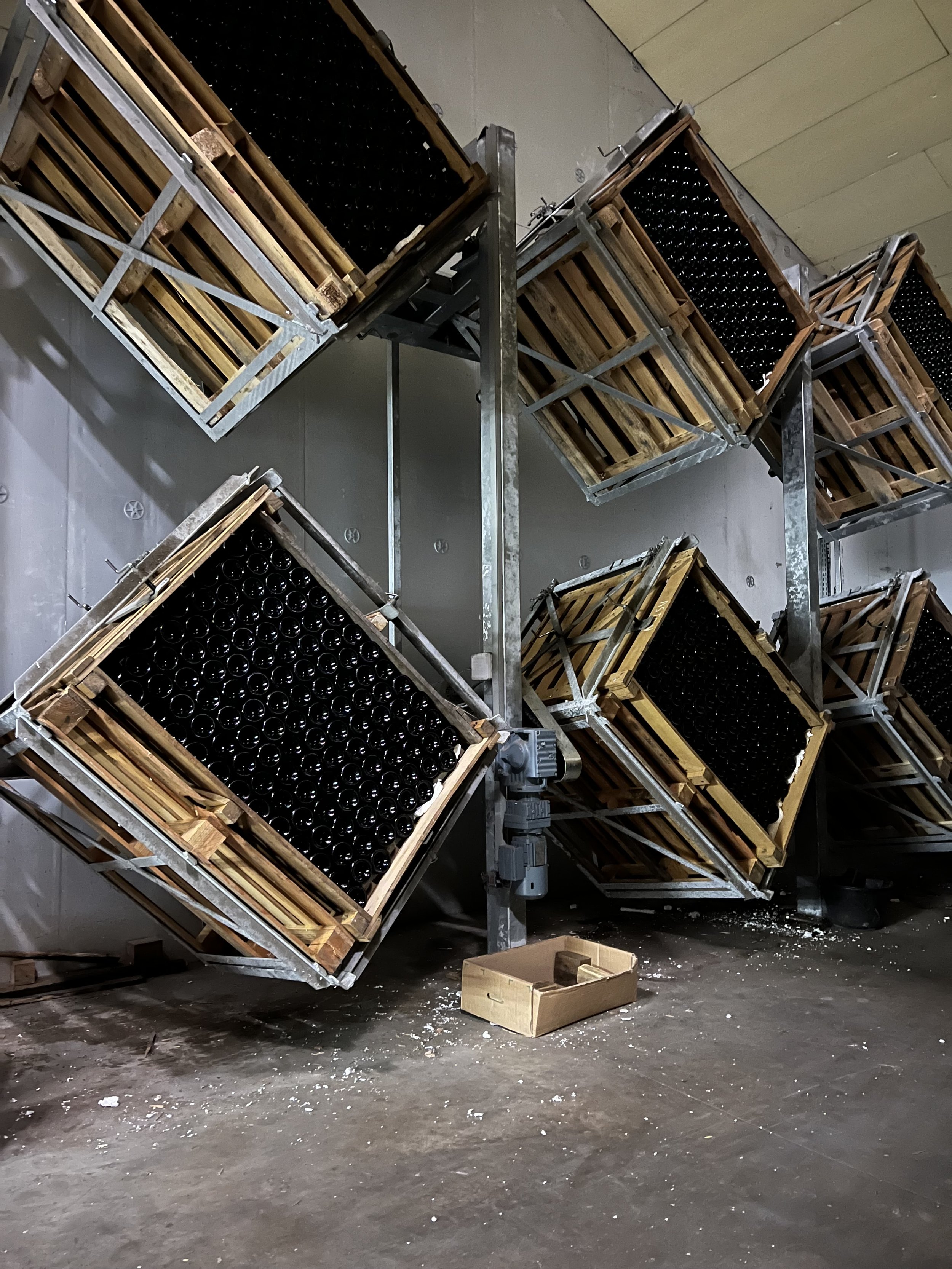
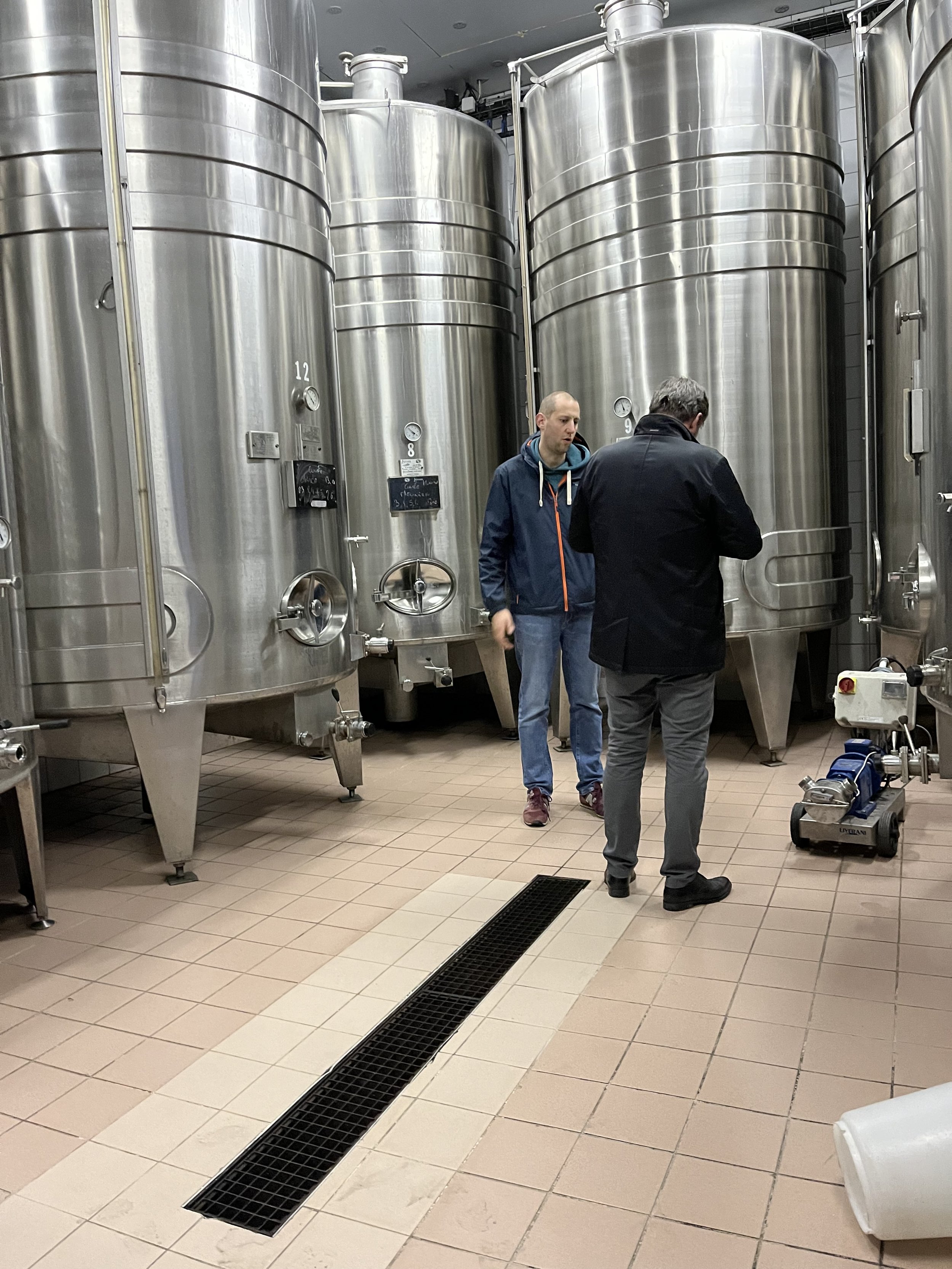

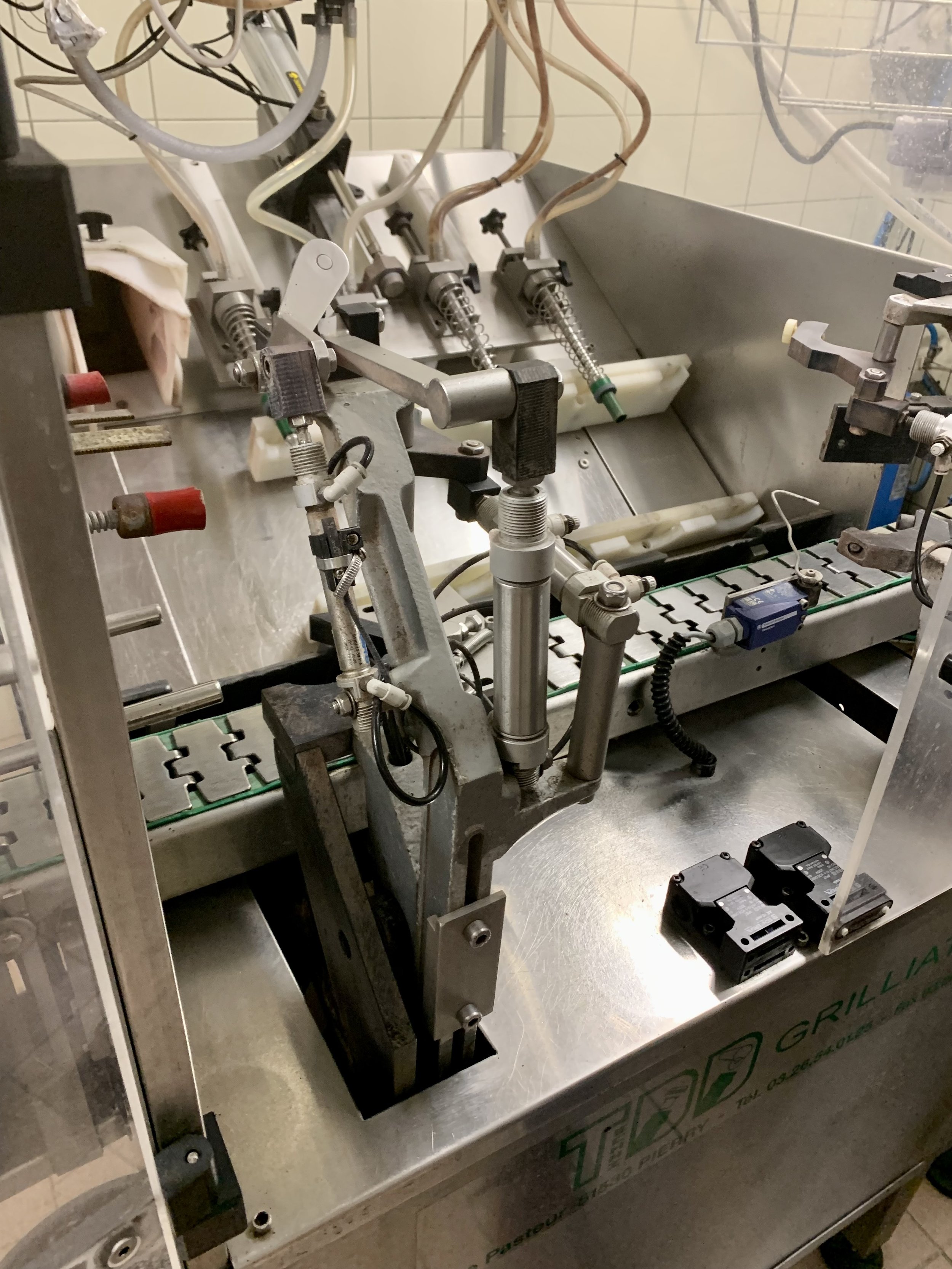
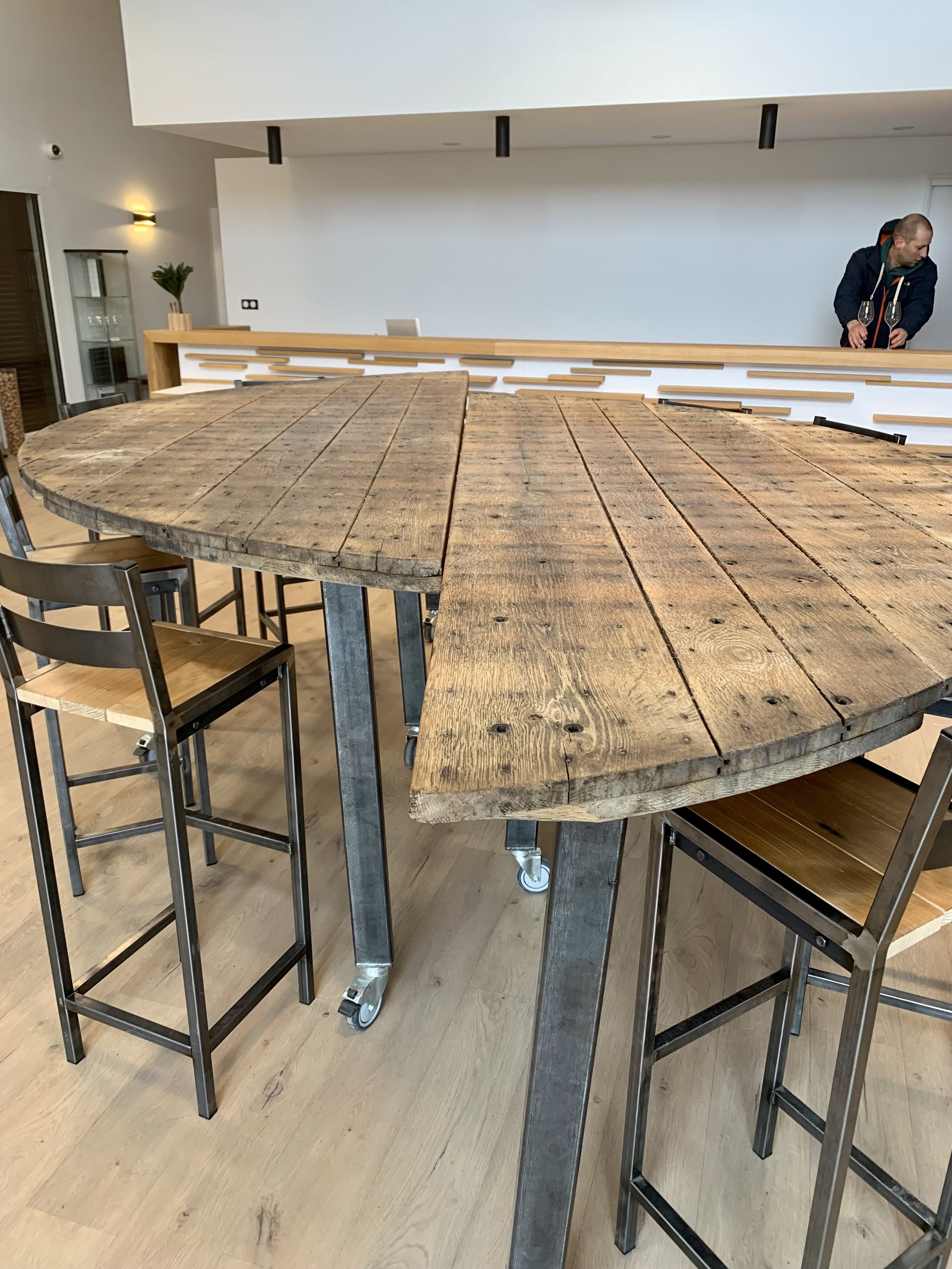
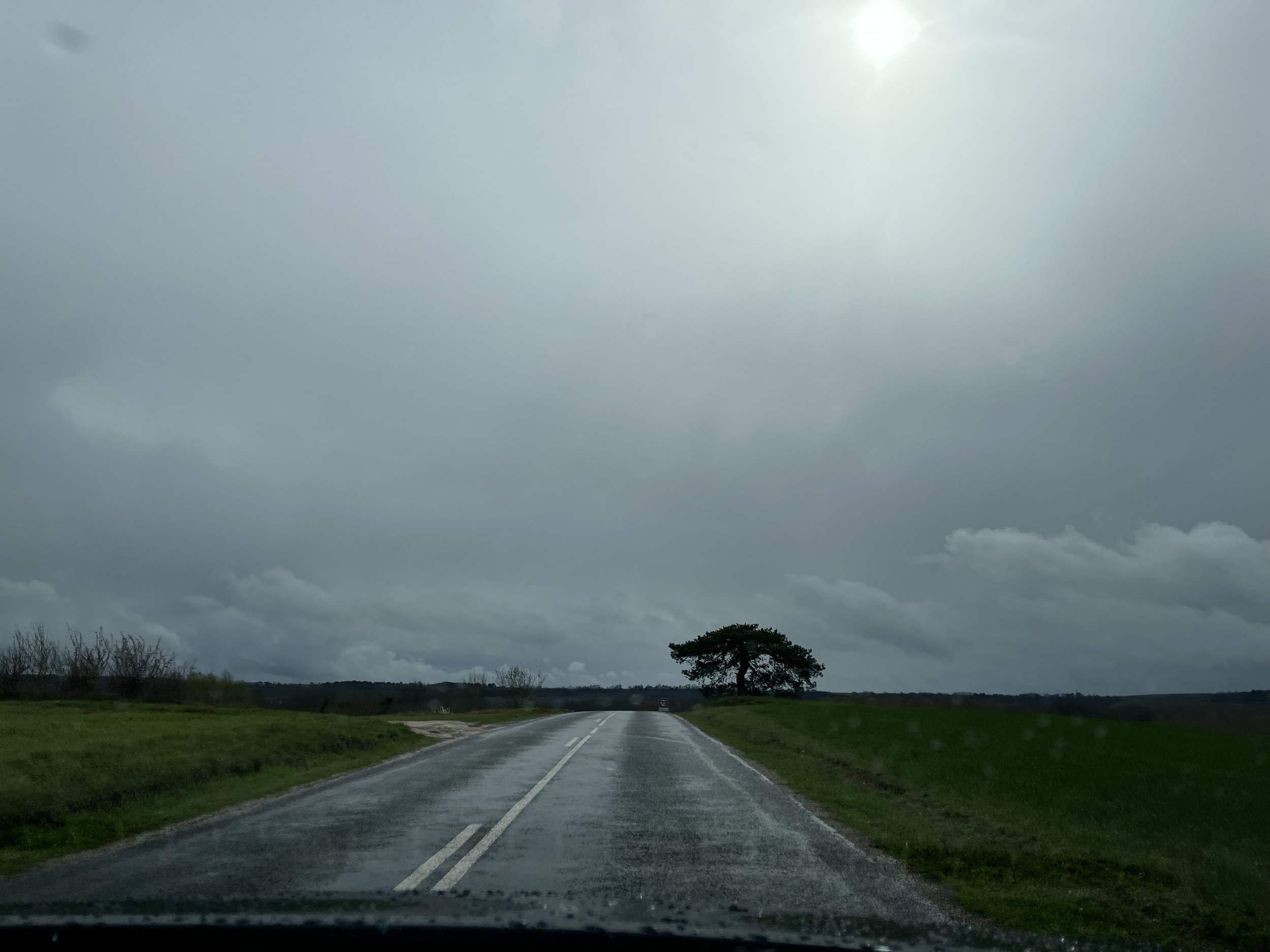
j.m. Goulard
Who: Damien Goulard
Where: Saint Thierry, Prouilly (Champagne, France)
What grapes: Pinot Meunier, Pinot Noir, Chardonnay
Key facts: Eight-hectare estate that makes 65,000-75,000 bottles of Champagne annually. Damien is a fourth-generation winemaker.
Website: http://champagne-goulard.com
Instagram: @champagnejmgoulard
J.M. Goulard "Origine" Champagne Blanc de Noir Extra Brut NV
Viticulture: Certified Organic
Soil type: Clay and Sand
Elevation: 130m
Grapes: 40% Pinot Noir, 60% Pinot Meunier
Method of fermentation: After pressing, it takes 12 hours to decant the juice. It is then moved to a large stainless tank for fermentation. After alcoholic fermentation, Goulard warms the tanks to initiate malolactic fermentation. After bottling, the winery ages their Champagnes for 2-5 years before release.
Tasted in April 2024, the wine was already quite open, a balancing act of high acidity and very ripe apple notes. Four grams per liter of residual sugar.
J.M. Goulard "Origine" Champagne Rosé NV
Viticulture: Certified organic
Soil type: mostly sand
Elevation: 130m
Grapes: 57% Pinot Meunier, 40% Pinot Noir, 3% vin rouge Meunier.
Method of fermentation: Partial aging in oak, two years on the lees. Five grams per liter of residual sugar.
This is a different take on pink wine. It vied with the Sereine for wine-of-the-visit for me in April 2024. Remarkable fresh black currant/blackberry character. Origine rosé is a very small production item for Goulard, from a site with southeastern sun exposure.
J.M. Goulard "Sereine" Champagne Brut NV
Viticulture: Organic farming, but it’s a challenge because Damien’s vines are spread across dozens of parcels and many neighbors aren’t organic.
Soil type: Clay, Sand and Chalk
Elevation: 130m
Grapes: 35% Pinot Noir, 30% Chardonnay, 35% Pinot Meunier
Method of fermentation: After pressing, it takes 12 hours to decant the juice. It is then moved to a large stainless tank for fermentation. Damien keeps cuvees from different villages separate, except for their Chardonnay, which is all fermented together, because they don’t have many white grapes. After alcoholic fermentation, Goulard warms the tanks to initiate malolactic fermentation. After bottling, the winery ages their Champagnes for 2-5 years before release.
Fresh herb aromas are in the foreground. Damien described it as, “typical Champagne. Elegant, easy.” It’s a little young, in Damien’s opinion. I felt it had great balance, in a classic Champagne style. This year it was my personal favorite of his non-rosé bottlings. Seven g/l residual feels correct. Before tasting this finished wine, we ambled next door to a house that used to belong to Damien’s grandparents. Now he uses it to store vins clairs, and pickers stay there during the harvest. The still wines are fascinating. Meunier really thrives in the sandy soil of the Massif St. Thierry, too much so in Damien’s opinion. He works hard to tamp down its vigor and keep yields moderate. In our survey of components, the Meunier showed more yellow apple, the Pinot Noir had all the racy finesse and mineral, and the Chardonnay was irrepressibly sunny, easy going. Interesting as individual wines, but far more compelling once assembled.
J.M. Goulard "La Charme" Champagne Extra Brut NV
Viticulture: Organic farming, but it’s a challenge because Damien’s vines are spread across dozens of parcels and many neighbors aren’t organic.
Soil type: Sand
Elevation: 130m
Grapes: Pinot Meunier
Method of fermentation: After pressing, it takes 12 hours to decant the juice. It is then moved to a large stainless tank for fermentation. After alcoholic fermentation, Goulard warms the tanks to initiate malolactic fermentation. Bottled July 2022, with 4g/l dosage (extra brut.) Disgorged November 2023.
Seventy perfect of the wine is vinified in oak. Damien feels that five years of aging is ideal for this wine. The fruit for La Charme is from a sandy parcel with a south-southeast sun exposure. A warmer part of the massif. La Charme is tranquil. In deference to Damien’s aging advice, it’s already cohesive, self-assured, whole.
J.M. Goulard "L'Éclatante" Champagne Rosé de Saignée Extra Brut
Viticulture: Organic farming, but it’s a challenge because Damien’s vines are spread across dozens of parcels and many neighbors aren’t organic.
Soil type: Sandy
Elevation: 130m
Grapes: Pinot Meunier
Method of fermentation: After pressing, it takes 12 hours to decant the juice. It is then moved to a large stainless tank for fermentation. After alcoholic fermentation, Goulard warms the tanks to initiate malolactic fermentation.
100% Meunier, aged for a minimum of five years. The wine is brut (7g/l) with raspberry, cherry, and marshmallow aromas.
Tasted in April 2024: Very expressive! Super-ripe strawberry, to the point that it almost smells like whole strawberries, plus shortcake. This wine would be superb paired with barbecue ribs. Last vintage of Eclatante took several months to really show its character, so it’s a welcome surprise to find this bottling wildly enjoyable today.
J.M. Goulard Champagne "Special Club" Extra Brut
Viticulture: Organic farming, but it’s a challenge because Damien’s vines are spread across dozens of parcels and many neighbors aren’t organic.
Soil type: Clay, Sand and Chalk
Elevation: 130m
Grapes: 40% Pinot Noir, 35% Chardonnay, 25% Pinot Meunier
Method of fermentation: After pressing, it takes 12 hours to decant the juice. It is then moved to a large stainless tank for fermentation. Damien keeps cuvees from different villages separate, except for their Chardonnay, which is all fermented together, because they don’t have many white grapes. After alcoholic fermentation, Goulard warms the tanks to initiate malolactic fermentation. After bottling, the winery ages their Champagnes for 2-5 years before release.
To be bottled as “Special Club” a wine must be approved by two blind tasting panels consisting of winemakers and sommeliers from the Club Tresors organisation. Creamy, rich, with aromas of tropical fruit and bergamot. The palate feel is extraordinary. He’ll make a 2018 and 2019 Special Club, then will change the name of the bottling to the lieu dit name for this vineyard.
I made a detour to Damien Goulard’s small farm in Prouilly. The eight-hectare estate is on Mt. St. Thierry, a not very mountainous expanse of countryside northwest of Reims. It was late March, and winter was still in effect. Cold rain pelted us during a short walk from Damien’s new tasting room (built during Covid) to his warehouse-winery. It wasn’t suitable weather to look at vines! Regardless of prevailing climatic conditions, my visit happened before bud break in Champagne’s northernmost continental climate zone. In Prouilly, new growth starts in April. There's not a ton to examine in March. Rows, trellising. Dirt.
Goulard makes 65,000-75,000 bottles of Champagne annually. He’s a fourth-generation winemaker. Damien started converting the farm to organic agriculture five years ago. In the era of his grandparents and great-grandparents, this was a place of polyculture. They grew asparagus and potatoes. His parents are very much involved, as are his brothers Sebastian and Sylvain. His parents made the pivotal decision to leave the local co-operative in 1995. Damien returned to the farm in 2012, and has been in charge ever since.
Inside his dimly lit workspace are a collection of gyro pallets, a “solera” of reserve wine, and some small (but fancy) equipment to efficiently freeze the yeast cap, and disgorge/recork his Champagnes. The latter process is endlessly fascinating. Modern machinery makes the bottles retain a little more pressure than methods from generations past. Champagne is getting fizzier. Some producers are reacting by aiming for lower bars/atmospheres of pressure at the outset.
“Champagne is a technical wine,” Goulard stated. No doubt. The machine that freezes the yeast before disgorgement does so at -24 Celsius.
A traditional 4000kg Coquard basket press (typical for Champagne) sits in the doorway. Filled to capacity, the press will yield 2,500 liters of juice. The first pressing will yield 2,000 liters, and a second pressing can extract an additional 500 liters of grape must. The first press juice is delicate, the second pressing fruitier. Everything beyond that point goes to the distiller.
After pressing, it takes 12 hours to decant the juice. It is then moved to a large stainless tank for fermentation. Damien keeps cuvees from different villages separate, except for their Chardonnay, which is all fermented together, because they don’t have many white grapes.
After alcoholic fermentation, Goulard warms the tanks to initiate malolactic fermentation. After bottling, the winery ages their Champagnes for 2-5 years before release.
Damien explained the workings of this small family domaine. The terroir of Mt. St. Thierry favors red grapes. Goulard’s vines are 50% Pinot Meunier, and 35% Pinot Noir. The former grows well in the sandier areas of Mt. St. Thierry, the latter in parcels with more clay in the soil. Goulard have a small amount of Chardonnay, planted in chalk. It is blended into the estate’s “Sereine” bottling. The family’s vines are south and southeast facing, to catch light and scant heat.
Back at the warm, airy tasting room across the street, we sampled Champagnes. The thread running through Damien’s offerings was ripe fruit, texture, and intensity. While quite dry (we tried a brut, and four extra bruts) the wines tasted sumptuous, with palate-coating rich fruit character very much at their center. I was impressed.
I liked Damien. He seemed thoughtful, calm, good-natured. But I left uncertain if the visit would be a professional success. It was clear that not much wine was available. Maybe none. Goulard noted that the fortunes of small grower-producers in Champagne are on the upswing. During Covid, demand for his wines had spiked significantly. It seemed like we’d reached a “maybe next year” situation.
Some months passed. I received an email. There could be a small shipment of wine for us. It seemed like maybe another client had neglected to collect their allocation. Beggars can’t be choosers! We snapped it up. I couldn’t be happier. Of course I’d prefer more cases, but the breadth of selections that Damien shipped to us provides an exciting first-look at this farm’s style. We’ll build bigger orders in the future, and stash away bottles of the Special Club and vintage rose for parties as yet unplanned.






